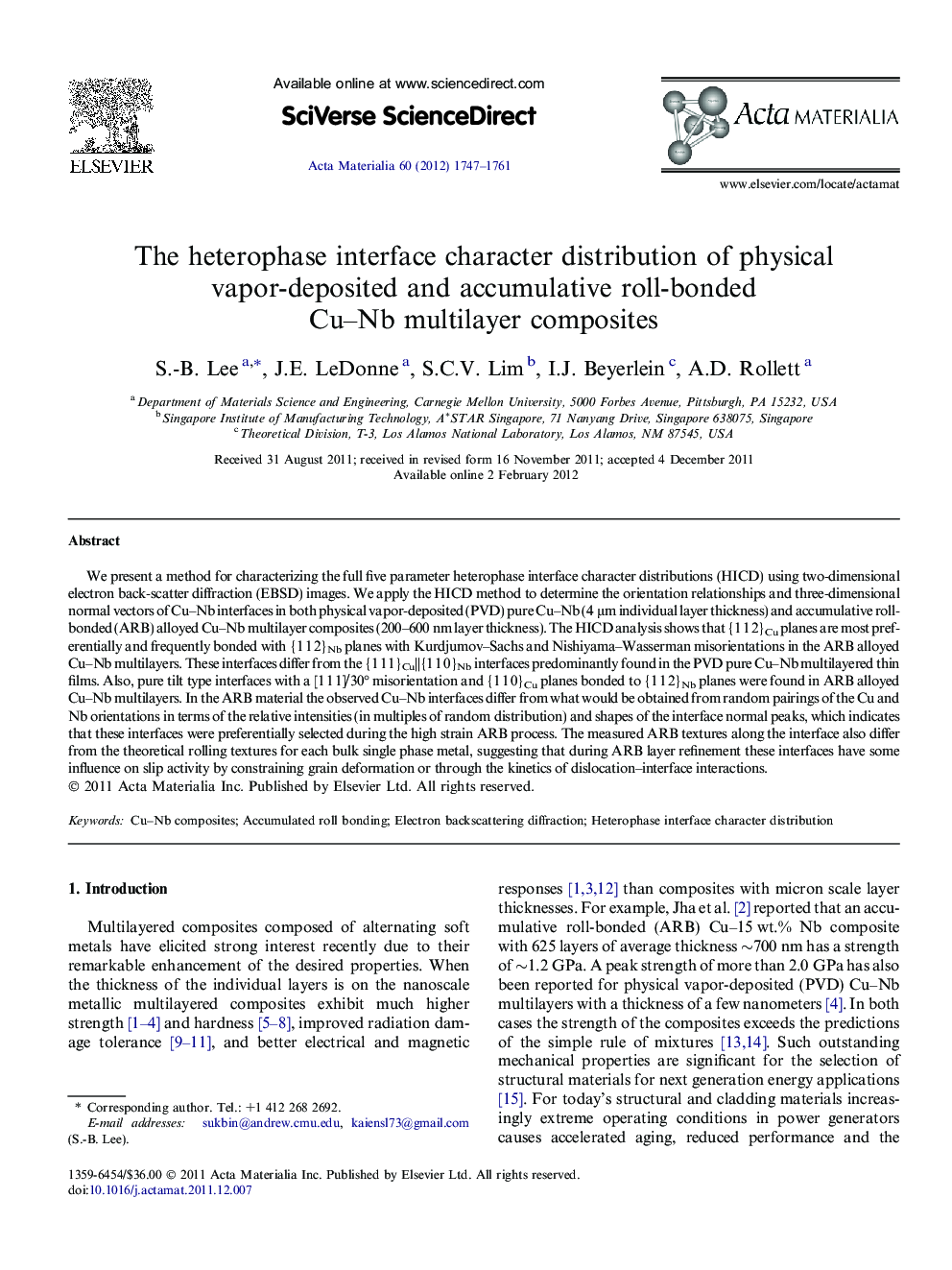| Article ID | Journal | Published Year | Pages | File Type |
|---|---|---|---|---|
| 1446833 | Acta Materialia | 2012 | 15 Pages |
We present a method for characterizing the full five parameter heterophase interface character distributions (HICD) using two-dimensional electron back-scatter diffraction (EBSD) images. We apply the HICD method to determine the orientation relationships and three-dimensional normal vectors of Cu–Nb interfaces in both physical vapor-deposited (PVD) pure Cu–Nb (4 μm individual layer thickness) and accumulative roll-bonded (ARB) alloyed Cu–Nb multilayer composites (200–600 nm layer thickness). The HICD analysis shows that {1 1 2}Cu planes are most preferentially and frequently bonded with {1 1 2}Nb planes with Kurdjumov–Sachs and Nishiyama–Wasserman misorientations in the ARB alloyed Cu–Nb multilayers. These interfaces differ from the {1 1 1}Cu||{1 1 0}Nb interfaces predominantly found in the PVD pure Cu–Nb multilayered thin films. Also, pure tilt type interfaces with a [1 1 1]/30° misorientation and {1 1 0}Cu planes bonded to {1 1 2}Nb planes were found in ARB alloyed Cu–Nb multilayers. In the ARB material the observed Cu–Nb interfaces differ from what would be obtained from random pairings of the Cu and Nb orientations in terms of the relative intensities (in multiples of random distribution) and shapes of the interface normal peaks, which indicates that these interfaces were preferentially selected during the high strain ARB process. The measured ARB textures along the interface also differ from the theoretical rolling textures for each bulk single phase metal, suggesting that during ARB layer refinement these interfaces have some influence on slip activity by constraining grain deformation or through the kinetics of dislocation–interface interactions.
